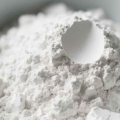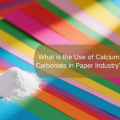- Welcome to China Calcium Carbonate Manufacturer
- WeChat:15078781000
1. Introduction
Nano calcium carbonate (Nano CaCO₃) is transforming performance in many industries, from plastics to pharmaceuticals. With particle sizes typically under 100 nm, it offers superior dispersion, increased surface area, and enhanced reactivity. For global buyers and researchers, understanding its industrial applications and sourcing advantages—especially from Chinese suppliers—is key to staying competitive.
2. What Is Nano Calcium Carbonate?
Nano calcium carbonate is a high-purity, ultra-fine form of CaCO₃, produced through controlled precipitation or grinding techniques. Unlike ground or precipitated calcium carbonate with larger particles, Nano CaCO₃ exhibits enhanced physical and chemical properties, making it ideal for applications that demand fine texture, mechanical strength, and improved processability.
“For a comparison between nano, heavy, and light grades of CaCO₃, see our guide: Heavy vs Light Calcium Carbonate: Key Differences.”
3. Key Advantages of Nano CaCO₃
Improved Mechanical Strength: Enhances tensile, impact, and flexural strength in composites.
High Surface Area: Offers better interaction with polymers and resins.
Excellent Dispersion: Nano-size particles prevent agglomeration, ensuring even distribution.
Whitening & Opacity: Ideal for paper, coatings, and plastics.
Reduced Shrinkage: Beneficial in sealants and injection molding.
Rheology Control: Modifies viscosity in inks, paints, and lubricants.
Barrier Properties: Improves resistance to gas, moisture, and chemicals.
4. Applications Across Industries
a) Rubber Industry
Nano CaCO₃ acts as a multifunctional filler and reinforcing agent, improving elasticity, durability, and aging resistance in tires, seals, and rubber sheets.
b) Plastics
It is widely used in PVC, PE, PP, and engineering plastics to improve rigidity, reduce shrinkage, and lower cost while maintaining mechanical strength.
“For in-depth data on Nano CaCO₃’s impact on polymer composites, refer to this research article on nano calcium carbonate in polymers.”


c) Paper Industry
Used in coatings and filler applications, Nano CaCO₃ enhances brightness, printability, and opacity with low abrasion to machinery.
Improves opacity, gloss, and anti-sagging properties. It also enhances scrub resistance and reduces pigment usage.


e) Inks & Sealants
Acts as a rheology modifier and anti-settling agent, improving flow behavior and surface finish.
f) Lubricants
Used as a thickener and anti-wear agent in specialty greases and cutting fluids.
g) Concrete & Construction
Enhances compaction, reduces water usage, and boosts early strength development in cementitious systems.
h) Food & Pharma
Serves as a calcium fortifier and pH regulator in food products; in pharmaceuticals, it functions as a filler and tablet binder.
i) Ceramics
Improves sintering behavior, whiteness, and thermal shock resistance in advanced ceramics and sanitaryware.
j) Lithium Batteries
Acts as a functional additive in cathodes and separators to enhance conductivity and thermal stability.
5. Why Choose Chinese Manufacturers?
China is a global leader in Nano CaCO₃ production due to its integrated supply chain, high-quality raw materials, and advanced processing technologies. Manufacturers like Jintai offer:
Custom specifications (particle size, coating, surface area)
Consistent quality with ISO and REACH compliance
Competitive pricing for bulk exports
Fast shipping and multilingual support
Whether you’re sourcing for industrial or research applications, Chinese suppliers offer both scale and flexibility.
6. Final Thoughts
Nano calcium carbonate is more than just a filler—it’s a performance enhancer across multiple industries. Its nanoscale properties unlock new levels of efficiency, quality, and innovation. When paired with reliable suppliers, it opens the door to better-performing products and long-term savings.
7. FAQ
Q: What is the average particle size of Nano CaCO₃?
A: Typically 20–100 nanometers, depending on the production method.
Q: Can Nano CaCO₃ be surface-modified?
A: Yes. It can be coated with stearic acid or silane for better compatibility with polymers.
Q: Is it safe for food and pharma applications?
A: When produced under food-grade or pharmaceutical-grade standards, it meets international safety regulations.
Q: What is the difference between nano, heavy, and light calcium carbonate?
A: See our comparison guide for detailed differences in structure and usage.









